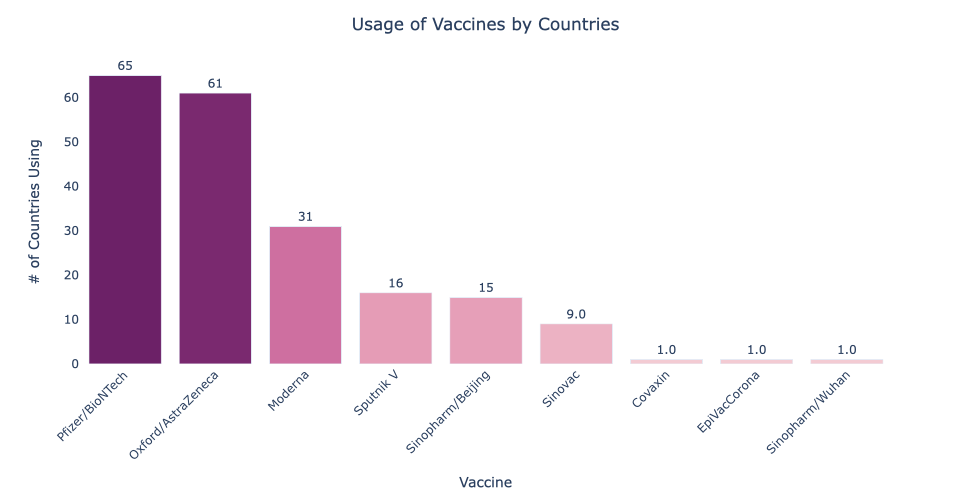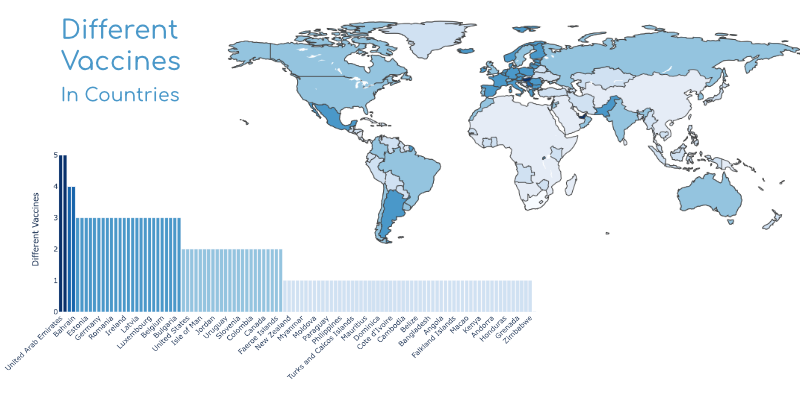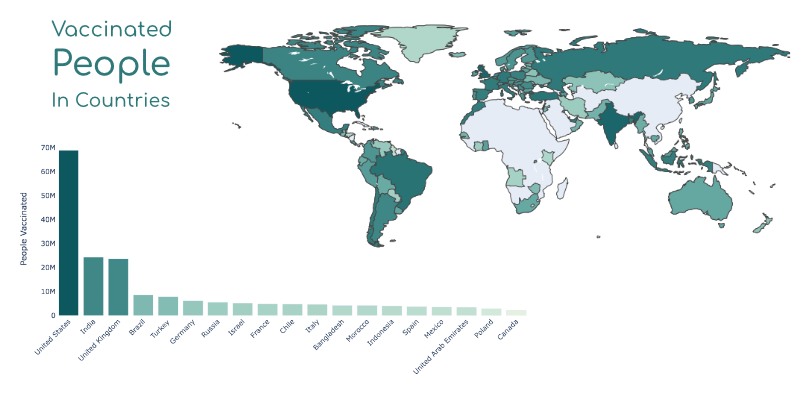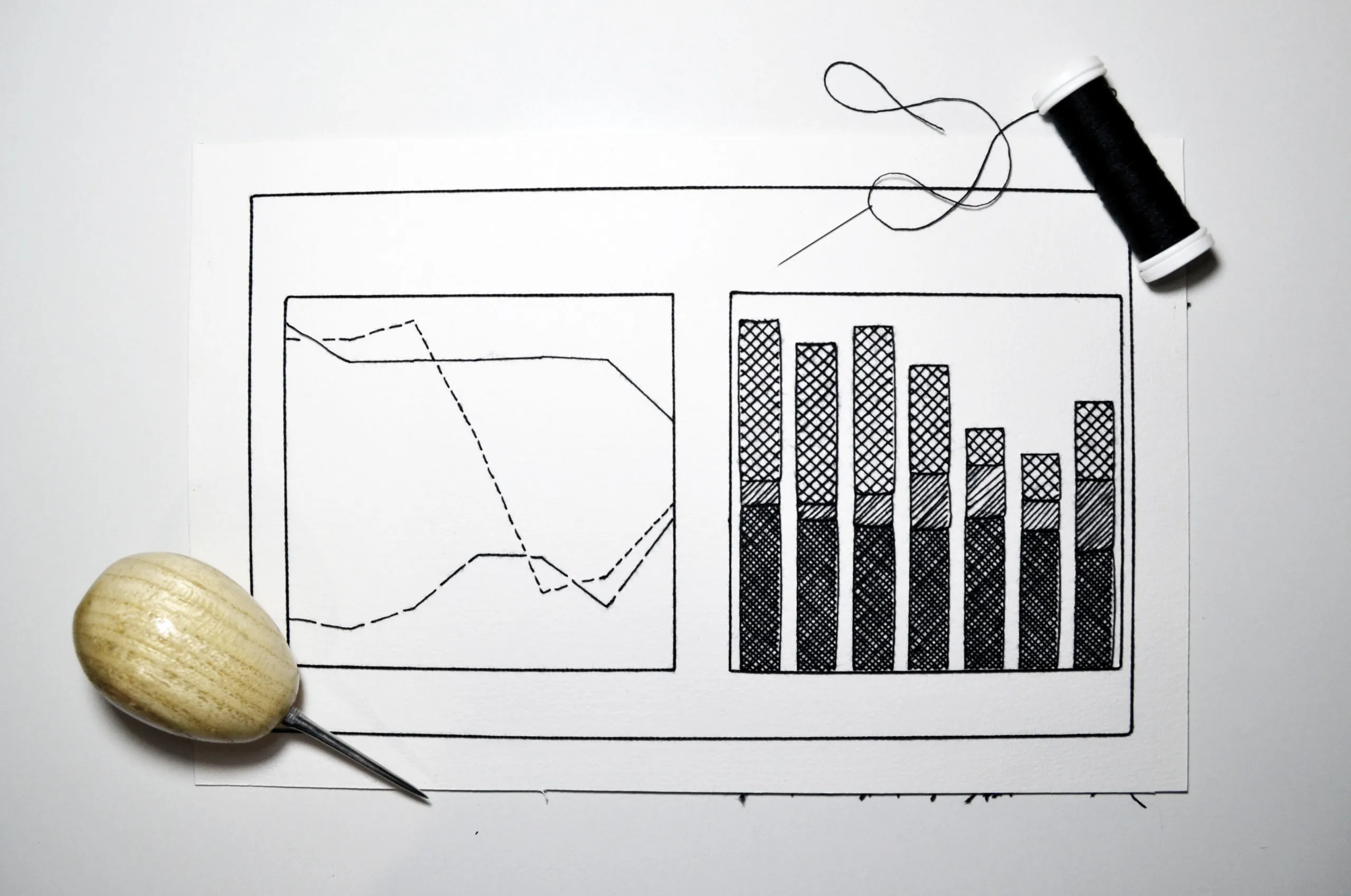TL;DR
This article analyzes global COVID-19 vaccination progress, examining which vaccines are being used worldwide, vaccination rates by country, and identifying the most successful countries in their vaccination efforts.
Who should read this?
Public health professionals, data analysts, and anyone interested in understanding global vaccination trends and progress during the COVID-19 pandemic.
Being vaccinated or not being vaccinated? While some people are in a heated debate over this dilemma, others wonder when -or if- this is going to be all over as we have gone through enough to make angels weep. There has been more than a year since the word 'lockdown' started to populate our everyday conversations. We all want to believe or do believe, there is an end in sight given the global vaccination programme has been in place for several months. But where really are we in this process? Are we close to the end? How long before we go back to our most beloved 'normal'?

A girl looking out of the window
While the vaccination process keeps going at full speed -with the hopes of going back to normal as soon as possible- it is worthwhile to look at the current status of all countries around the world to answer some of the most asked questions:
- Which COVID-19 vaccines are being used at the moment?
- How many people have been vaccinated in each country?
- Which country is performing better in the vaccinating process?
In this article, you will find answers to all these questions.
Data
You can access two main datasets that have been analysed to address these questions via the links below.
Analysis
Exploratory data analysis and data visualisation have been performed with Python in a Jupyter notebook. To access the notebook and interact with all the visuals in this article, please go to Kaggle. The main python libraries used in this notebook are pandas and NumPy for the analysis and plotly for the visualisation.
Results
Vaccines
It can be clearly seen that the number of vaccines in the global market has been increasing since the first vaccine was released. Here is a quick look at the different vaccine types and the number of countries where they are currently being administered.

Usage of vaccines by countries
It appears that the vaccine developed by Pfizer/BioNTech benefits from being the first in the market. Although the vaccine developed by Oxford/AstraZeneca was released shortly after that of Pfizer/BioNTech, it is a strong competitor in the vaccination race since it is easier to roll out in terms of handling and transportation. Currently, these two are the two most common COVID-19 vaccines around the world that have been approved and are being administered in more than 60 countries.
Let's have a look at the countries' usage of different vaccines. The image below shows the number of different types of vaccines approved to be administered in every country.

Different vaccines in countries
While almost half of all countries are using a single type of vaccine, there are others who use more than one type of vaccine. Could this be an indication of success in each countries' vaccination process? Let's keep in mind that UAE and Hungary have 5; Bahrain and Serbia have 4 different types of vaccine in circulation. We will soon see the contribution of this policy, if any.
Vaccinated People
To have a better understanding of the progress, see the visual below indicating the total number of people vaccinated in every country.

Vaccinated people in countries
More population means more people to vaccinate. United States is spearheading in the number of individuals vaccinated with almost 70M people, followed by India, UK, Brazil and Turkey. What does this mean though? Is it really a success that the US has vaccinated well more than half a hundred million people already? Does this mean the US is the leader in the vaccination process? Well, not so likely. It is a common mistake to look at absolute numbers rather than percentages.
Numbers are definitely not wrong, but sometimes, they might be misleading. It is clear that the countries with high populations have also a high number of people vaccinated (and they should, right?). To understand the countries' success in the vaccination process better, we should seek a better performance indicator than an absolute number of people vaccinated.
Vaccinated % of Population
Having said 'a better performance indicator', let's have a closer look at what % of the total population in every country has been vaccinated so far. This method will definitely show more accurate results than measuring the total number of people vaccinated.

Vaccinated percentage of population
I can hear you asking "Where the heck is Gibraltar? or Seychelles? ". Before asking this question and that "They have a considerably small population, so vaccinating that number of people should not be so hard, right? ", do not jump to a conclusion quickly. You should remember that these countries also have limited distribution capacity and resources, which is proportionately equivalent to their population. Let's be honest, none of us were expecting these regions to be at the top of the list, yet here it is... The final results show the top 5 best-performing countries in the vaccination process.
And the winners are:
- Gibraltar
- Seychelles
- Israel
- Falkland Islands
- United Arab Emirates
And a final note; it looks like the 5-vaccine strategy of United Arab Emirates may have been working. But the others in the Top 5 are using only 1 or 2 vaccine types in their vaccination policy and all are more successful than UAE. So it is hard to conclude that using more different types of vaccines will make you more successful in the process.
Relativity is everything
Considering every single country is responsible for its own people, we can understand that the success in the vaccination process should not only be assessed with the number of people vaccinated. When we look at the total % of the population vaccinated, we see a more accurate indicator of success and conclude that the measure of success is quality rather than quantity.


